URWERK – EMC Time Hunter Limited Editions NEW
SIHH 2016: URWERK presents the EMC “Time Hunter”
Time: it's by far the most valuable resource we have, so it's worth measuring accurately. But no matter how well made or how well-regulated a wristwatch is, the unique activities and environments of individual owners can detrimentally affect chronometric performance. The new EMC enables its wearer to both monitor the health (amplitude) of the watch and its precision as worn on the wrist. Accuracy can then be easily adjusted for each owner's lifestyle. Interactivity is at the heart of the EMC concept and is the real added value of the precision watch.
Click on the mouse wheel to see the large size ... BIG FOTO
EMC “Time Hunter” is a fully 100% mechanical watch with electronically enhanced indications. It launches in two limited editions of 15 pieces each: one in natural titanium/steel and one with a military green ceramic-coated titanium/steel case.
EMC “Time Hunter” features a highly legible time display with central hours and minutes indicated with high-contrast black hands enhanced with bright white Super-LumiNova. A rotating disk displaying seconds at 1 o'clock is visually balanced by the power reserve indicator at its antipode at 7 o'clock. The Super-LumiNova also ensures high legibility at night as it glows in blue and white.
The dial in the top left corner at 10 o'clock displays the two EMC electronic indications: timekeeping precision to +/- 15 seconds per day and the amplitude of the balance. Turning EMC over reveals the fully in-house movement with integrated circuit board (the EMC 'brain'), the top of one of the two mainspring barrels near the crown, and the top of the balance wheel and optical sensor on the winding handle side.
What benefit does EMC “Time Hunter” offer to its wearer?
When a watch is regulated (its precision tested and adjusted) by the watchmaker before it is sold, it is usually placed on a continually rotating arm in a fairly temperature-stable room. The rotating arm ensures that the watch spends fairly equal time all positions. But the timing of a mechanical watch changes slightly in each position as well as with changes in temperature. So in the real world of a watch on the wrist, how long it spends in each position (on average) will depend on the wearer's activities: work, leisure, and how long each day it is actually worn. Two different people wearing the same watch for a week will find that its accuracy differs because the watch will have experienced different positions in different activities over the week.
Click on the mouse wheel to see the large size ... BIG FOTO
EMC enables the wearer to note how many seconds the watch gains or loses in a week (or month), to adjust the precision, and then test that precision using the EMC function to confirm that the adjustment is correct. This concept of interactivity allows EMC to be as precise as possible for a specific wearer's lifestyle and even to evolve with any changes.
How it works
The fold-out crank handle is first wound to generate power for the EMC indications,– there are no batteries – which is then stored in a super capacitor. After winding, a hand indicates either
δ (processing underway) or P (not enough power). The EMC hand will then first indicate the movement's precision to +/- 15 seconds per day for a few seconds, followed by the amplitude of the balance, the latter being a good indicator of the health of a movement and if it requires servicing. As well as these two indications, a LED on the precision display between -5 and -15 seconds will shine either green for “all okay,” or red if one or both of the EMC indications fall outside acceptable parameters.
The precision of the movement can then be simply adjusted faster or slower by turning the screw on the back of the watch. This allows the user to adjust the time to suit their own lifestyle.
What is amplitude and why does EMC measure amplitude?
While the concept of precision (as in how many seconds a day a watch is running fast or slow) is fairly easy to understand, amplitude of the balance is less obvious. The precision of a grandfather clock is regulated by a pendulum swinging back and forth, and the precision of a wristwatch is regulated by a balance wheel with a hairspring inside oscillating back and forth. "Amplitude" is how far in degrees the pendulum or the balance wheel moves through each oscillation.
Click on the mouse wheel to see the large size ... BIG FOTO
While in theory both pendulums and balance wheels should be isochronous at all amplitudes, i.e. each oscillation should take exactly the same time whether swinging through a small or large distance, in practice the balance in most wristwatch movements should oscillate with an amplitude between 220° and 280° for maximum efficiency. Because the tiny balance wheel has relatively low mass and oscillates so quickly (back and forth four times each second), the slightest degradation in the lubricating oil of the balance staff (axel) manifests in lower amplitude. So balance amplitude is a good indicator for a movement being "healthy" or needing service.
The balance is the very "heart" of nearly every mechanical watch movement. And as with our own heart, the strength of its beat (amplitude) and the regularity of its beat (precision) are good indicators of health.
"As a watchmaker, I am quite proud of URWERK developing, manufacturing, and regulating our own balance wheel for EMC as very few brands actually make and regulate their own balances and they really are the heart of mechanical movements," explains URWERK’s co-founding master watchmaker Felix Baumgartner.
What's on the back?
What's on the back?
Click on the mouse wheel to see the large size ... BIG FOTO
Two things to note on the back of EMC before we delve into the nicely finished movement are the timing precision adjustment screw at the top for fine tuning the precision of the movement and the neat pusher at the bottom between the lugs that cleverly pops the crown out. Looking through the display back into the movement we see the cover over the balance housing the optics that measure the precise rate of oscillation of the balance, with a tiny cable leading to the electronics visible through a grill on the right. The vertically stacked double mainspring barrels are also prominently visible beside the electronic circuit board.
Click on the mouse wheel to see the large size ... BIG FOTO
The audacious idea of incorporating a Witschi-like measuring instrument in a mechanical watch became a veritable quest for URWERK. “The new EMC allows you to obtain a reliable and accurate piece of data on your timepiece at the touch of a button – information that until now has been the preserve of professional watchmakers,” says Baumgartner. “Using this information, you can fine tune one of the most exciting, most jubilant mechanisms invented – the mechanical watch – all by yourself.”
At its heart, EMC has a triple objective: to show how external parameters (positional changes, temperature, and pressure) influence the timing of the movement; to enable the wearer to adjust the timing; and to facilitate interactivity between the timepiece and its owner.
EMC is inherently a precision mechanical watch with an in-house movement conceived, developed, and crafted in the URWERK ateliers in Zurich and calibrated by URWERK in Geneva. The movement meets the most stringent quality control, with its chronometric performance tested in five positions during a 30-day cycle to ensure that it meets the highest standards for a precision watch.
EMC’s movement is equipped with the following features:
- - A bespoke balance wheel made of ARCAP, an alloy long admired by URWERK for its non-magnetic and anti-corrosion properties. From the very first glance, the originality of this specially developed balance is striking. Its perfectly linear morphology is the result of careful calculations to optimize data from the optical sensor, maximize aerodynamic efficiency, and minimize loss of amplitude.
- - Power is provided by two large mainspring barrels in series mounted vertically on a single shaft. These provide a long 80-hour power reserve, which is conducive to stable linear timing performance.
- - The timing adjustment screw is accessible on the back of the watch and allows the owner to make very fine adjustments to the balance rate regulator by changing the active length of the balance spring by turning a simple screw.
Click on the mouse wheel to see the large size ... BIG FOTO
To monitor and evaluate the mechanical movement, an” electronic brain” was then needed. Olivier Evalet, a software developer who is passionate about software and computer engineering, was instrumental in helping this bold project succeed: "The idea was to use precision optics, i.e. light, to measure the precision of a mechanical movement. The accuracy we managed to achieve is better than 10 microseconds. And we have created a reliable system that is designed to work over the long term. The power for EMC's electronic ‘brain’ derives not from a simple battery but a super capacitor that even after 100,000 to 200,000 charge/discharge cycles loses very little performance. We also chose a high-frequency oscillator with an extremely long life – its instability is only 3 parts per million over a full year."
The innovative EMC timing rate monitoring unit has been developed to include the following:
- - An optical sensor on the balance wheel capturing the precise rate of oscillation of the 4 hertz / 28,800 vph regulator, over a period of 3 seconds. This sensor consists of a transmitter and a receiver positioned either side of the balance, and is triggered manually by pressing a button on the left side of the case.
- - A 16,000,000 hertz electronic oscillator provides EMC’s reference timing rate. The performance of the balance of EMC (4 Hz) is compared against this lightning-fast oscillator to obtain the most accurate measurement possible.
- - Artificial intelligence (the computer) determines the difference between the timing rate of the movement and that of the reference oscillator. Each microsecond difference between the two values is expressed as a gain or loss of a second per day of the timing rate. A variation of just 0.0000014 of a second per half-vibration translates as a variation of a second per day.
- - Manual-winding generator (the generator). EMC’s monitoring unit (the optical sensor and the computer) is powered by a micro-generator made by the Swiss company Maxon, which is well known for developing motors for NASA’s Mars rovers.
Martin Frei, designer and co-founder of URWERK, had the considerable task of bringing all of EMC’s technical elements together in a visually appealing and comfortably wearing wristwatch. "At URWERK, the starting point of our creations is usually a sketch of the completed watch that embodies my and Felix’s ideas before the micro-mechanics are fully developed. But with EMC, the technical features of the timepiece were already established and this made my task that little bit trickier. We miniaturized the EMC components to the extreme, and this allowed me some leeway in terms of design. My approach was one of pragmatism – from incorporating the folding crank into the case band to making the electrical energy storing capacitor part of the case. In terms of design, you can spot the influence of objects that are dear to me: the crank echoes that of old SLR cameras; and the design of the balance wheel is reminiscent of a vintage 1/4-inch tape reel."
EMC “Time Hunter” marks the dawn of a new era; that of a fully mechanical watch enhanced by electronics allowing the owner to gauge both the state of the movement and its chronometric performance. EMC also enables the user to fine-tune the timing of the watch to better suit individual daily rhythm and pace of life.
---------------------------------------------------
Technical Specifications
Limited Editions of 15 pieces
Case
- Case material: Titanium and steel
- Case material: Military Green Ceramic-coated Titanium/steel
Glasses: Sapphire crystal with anti-reflective coating
Water resistance: Pressure tested to 3 ATM
Finishing: Satin finish; bead-blasting
Movement
Calibre: UR-EMC2 calibre conceived, developed and manufactured by URWERK
Escapement: Swiss lever escapement
Balance wheel: ARCAP P40, linear balance coupled to the optical sensor
Frequency: 28,800 vph - 4Hz
Balance spring: Flat
Power source: Vertically mounted double mainspring barrels, connected in series
Power reserve: 80 hours
Winding: Manual winding
Surface finishes: Côtes de Genève, snailing, micro-bead blasting, polished bevels on screw heads
Artificial intelligence Generator: Maxon® generator with manual winding charging super capacitor
EMC system: Optical sensor controlled by an integrated circuit board; 16'000'000hz reference oscillator
Indications
Hours, minutes, seconds; precision delta, amplitude, power reserve.
Super-LumiNova® treatment on markers
Controls
Two-position crown
Winding handle to generate electricity to power the δ precision indicator
Button to activate the δ precision and amplitude indicators
On the back: Crown release button and Fine-tuning screw to adjust the rate
---------------------------------------
Press Release
--------------------------------------------
Media contact:
Ms Yacine Sar
Telephone: +41 22 900 2027
Mobile : +41 79 834 46 65
press@urwerk.com
------------------------------------------------
www.facebook.com - URWERK
------------------------------------------------------
www.Urwerk.com


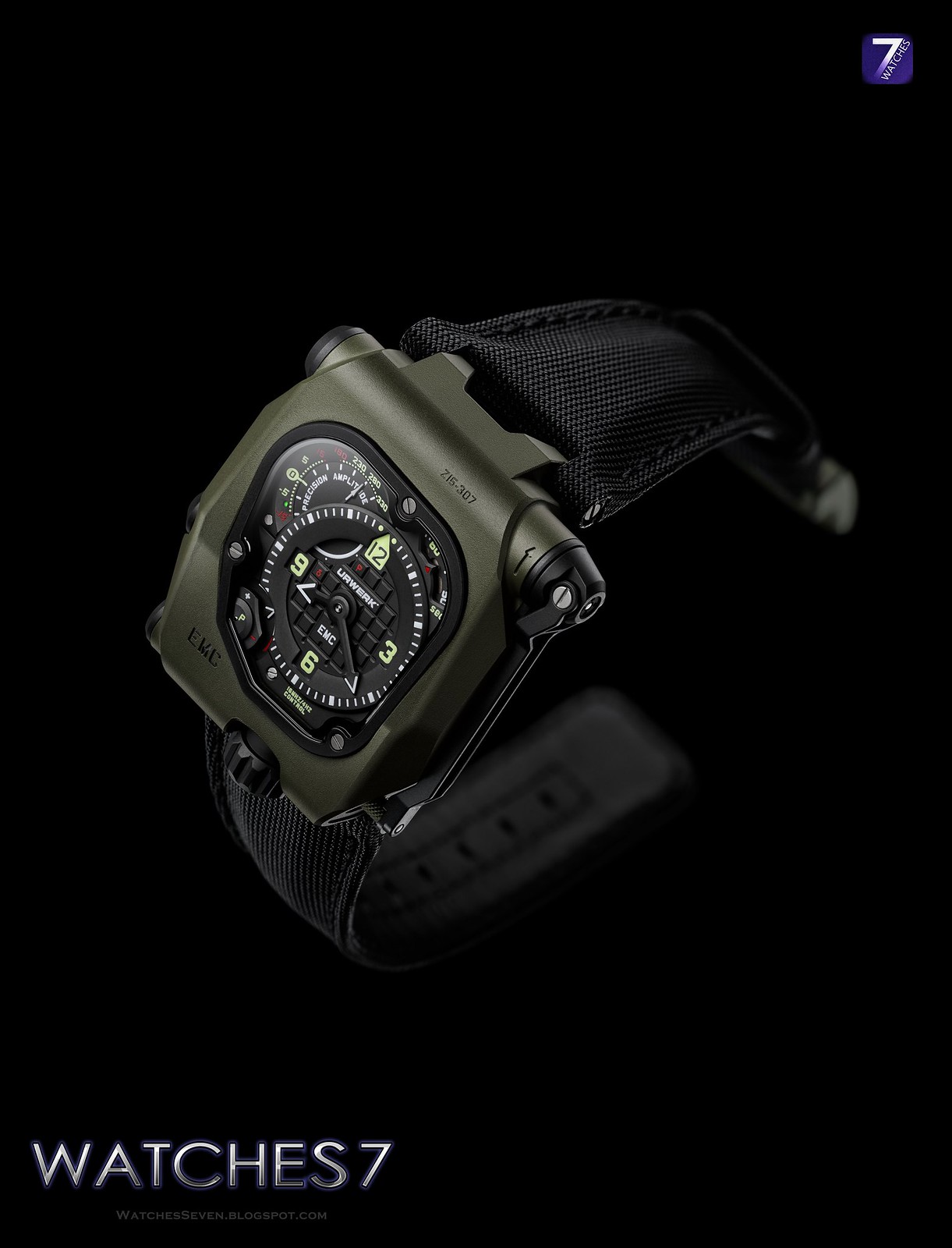
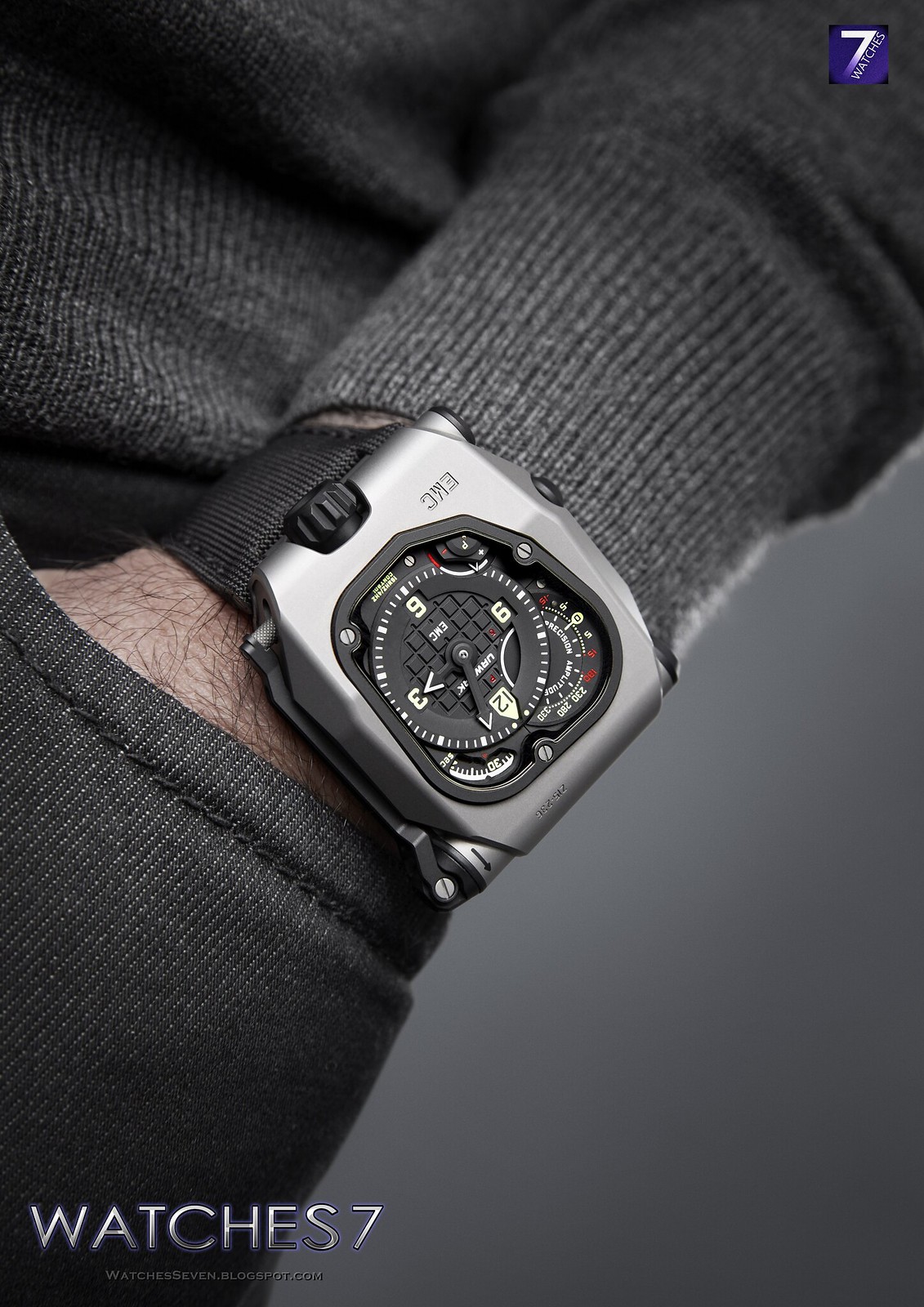
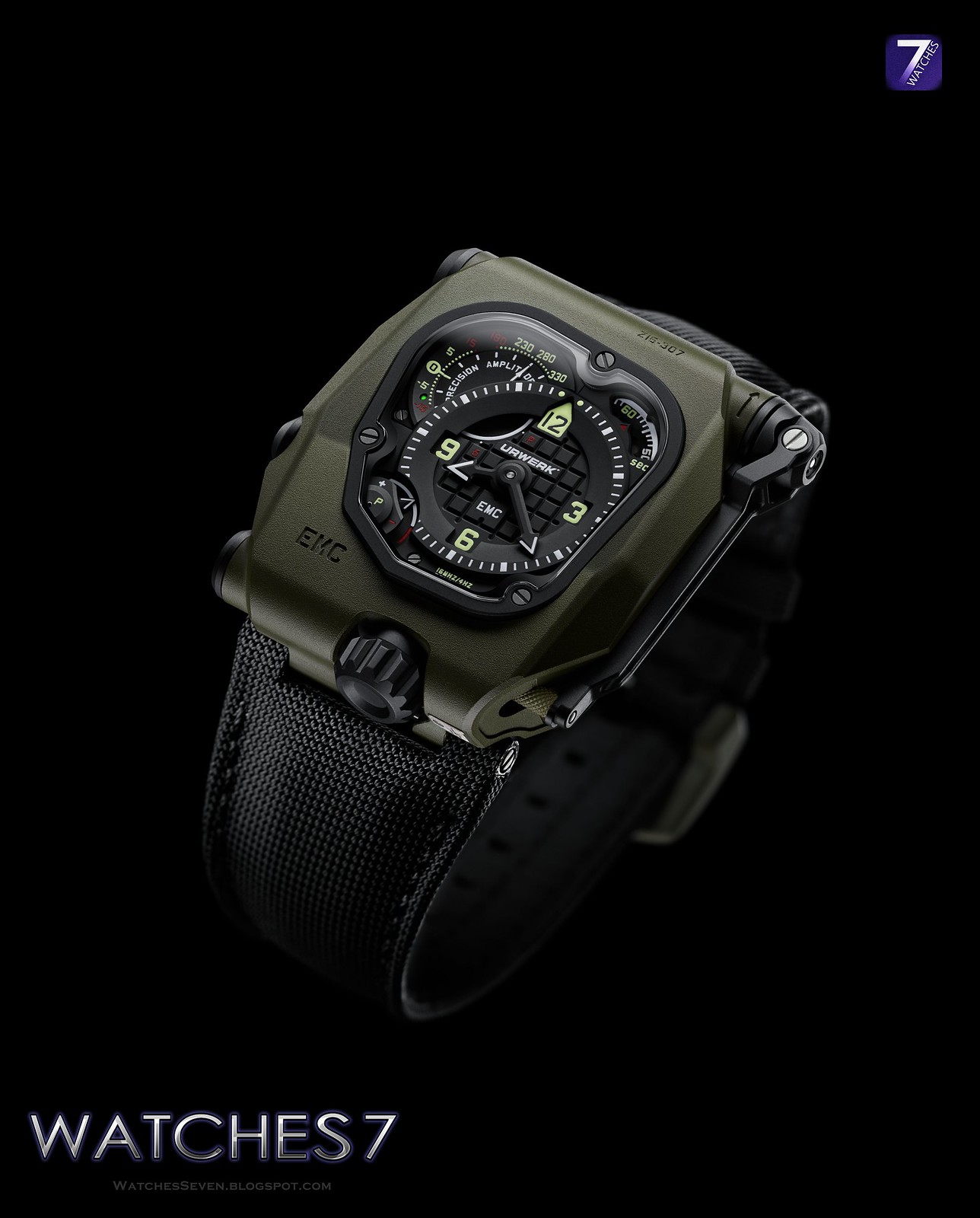
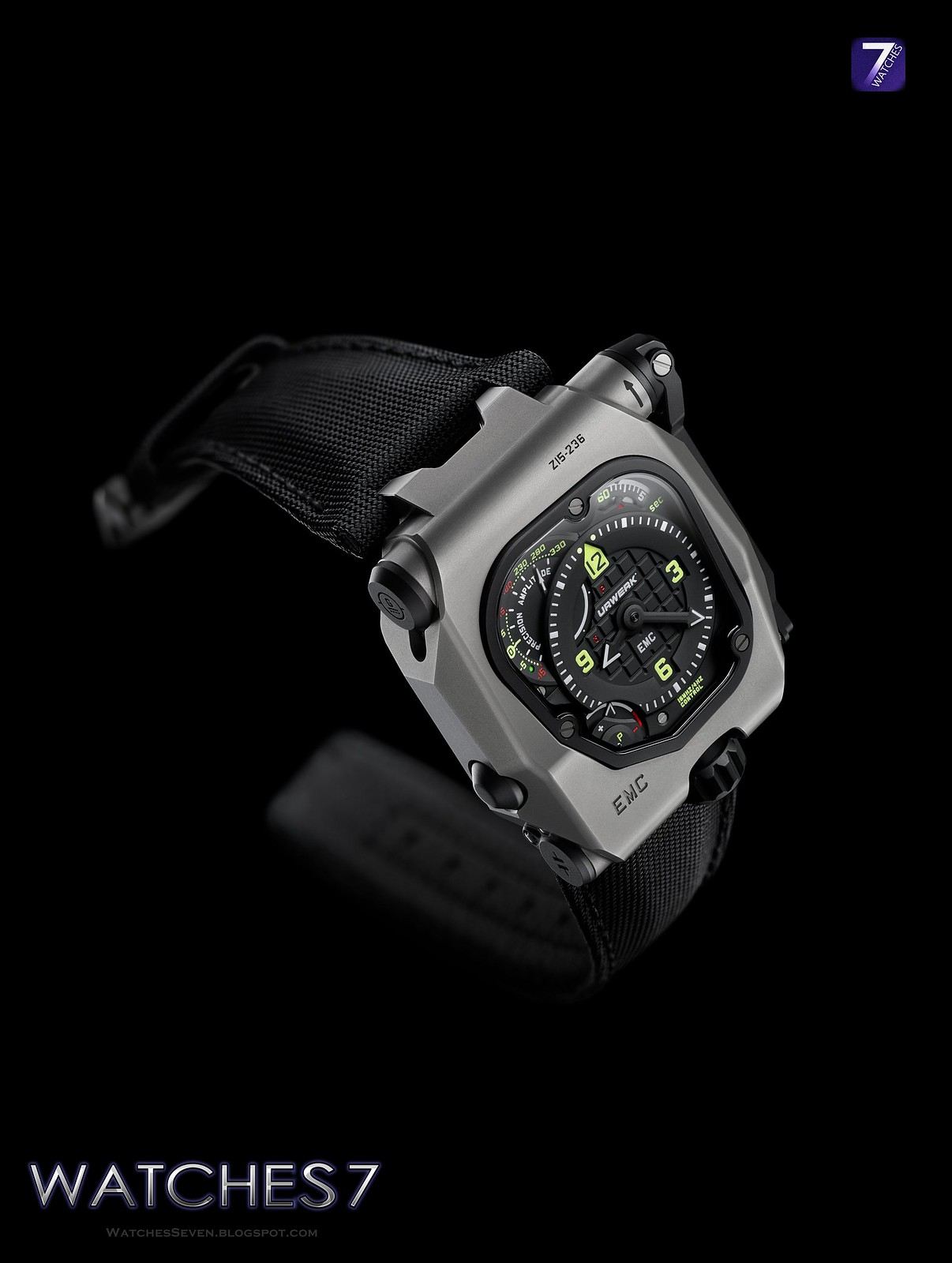
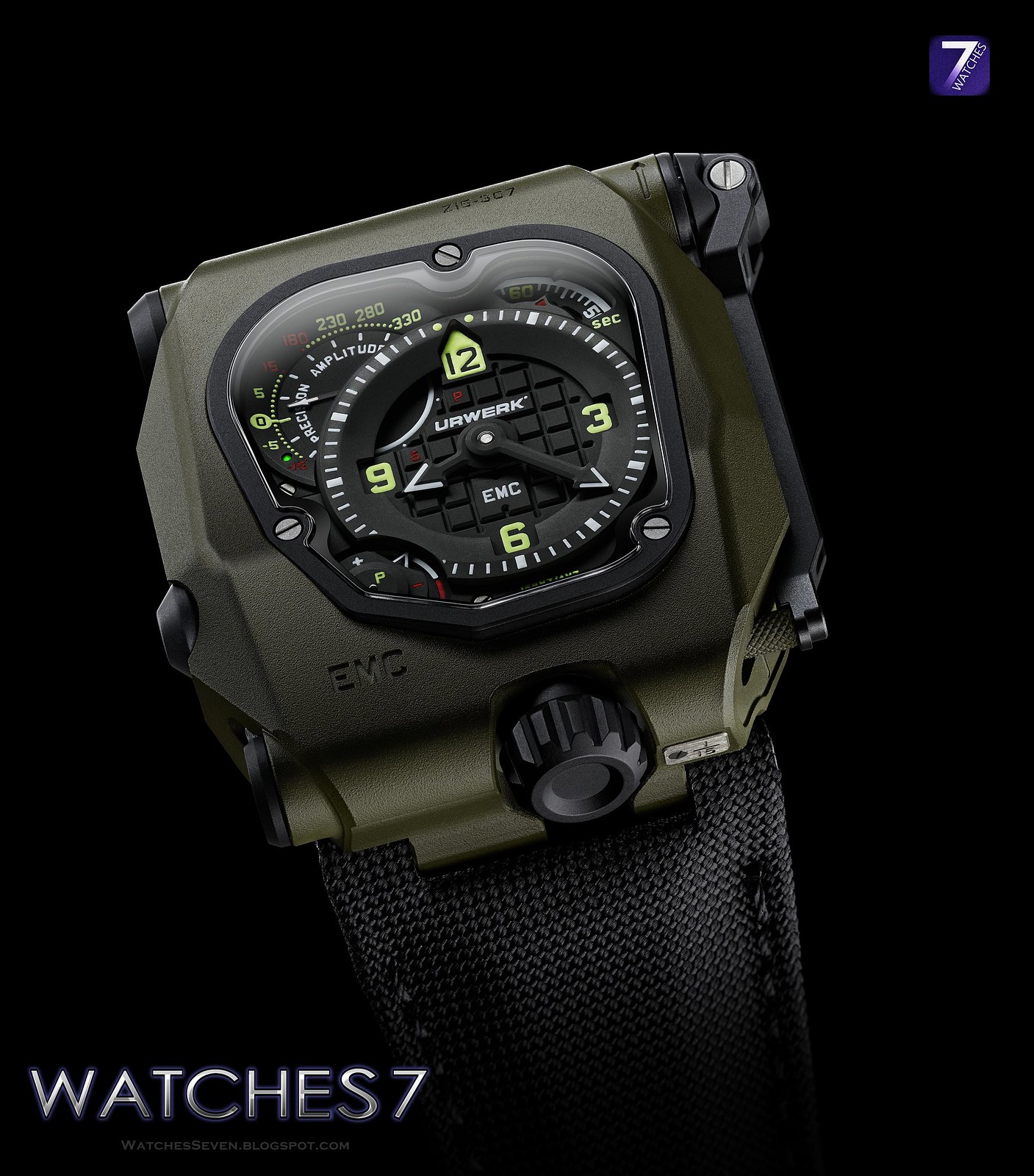
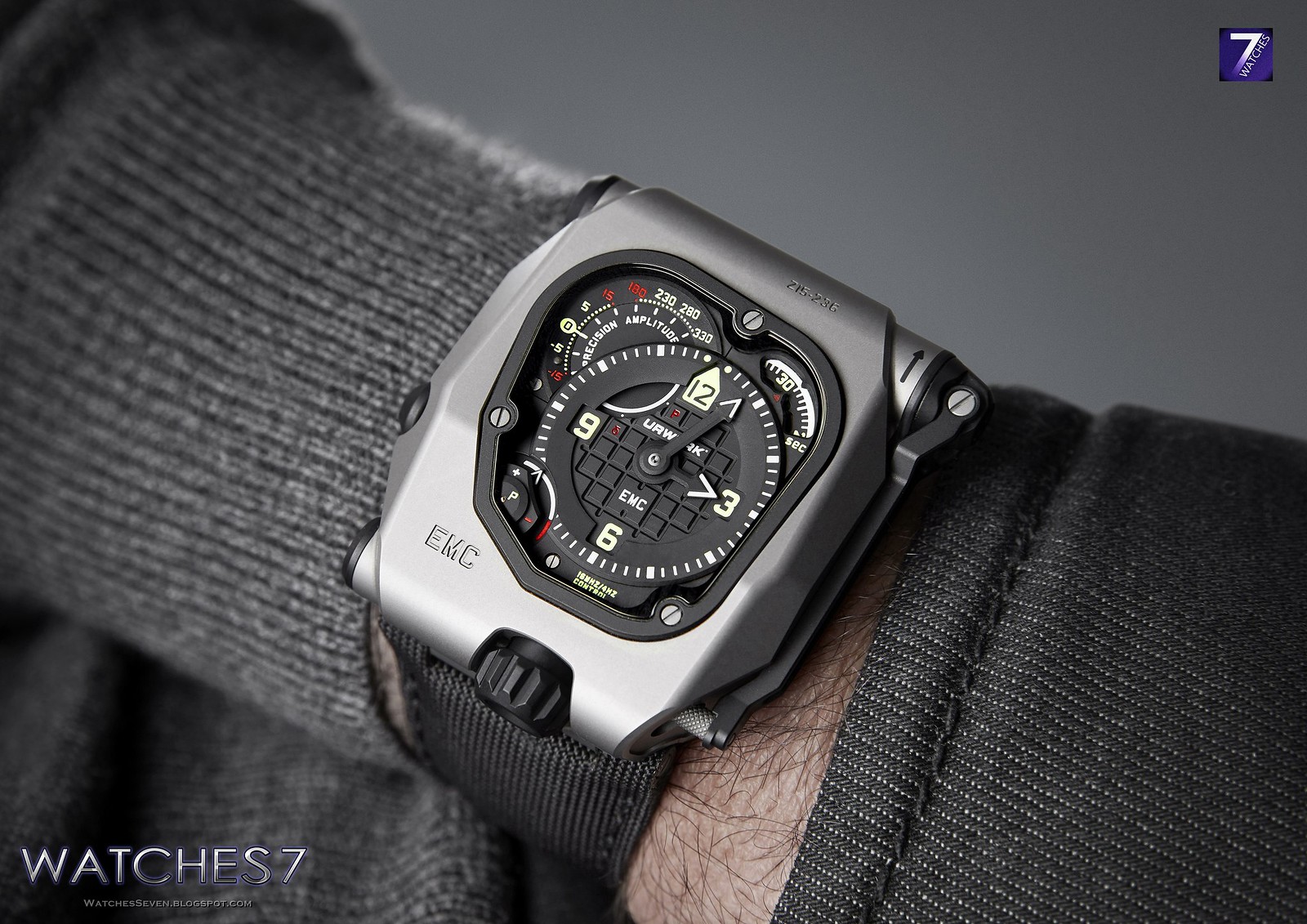
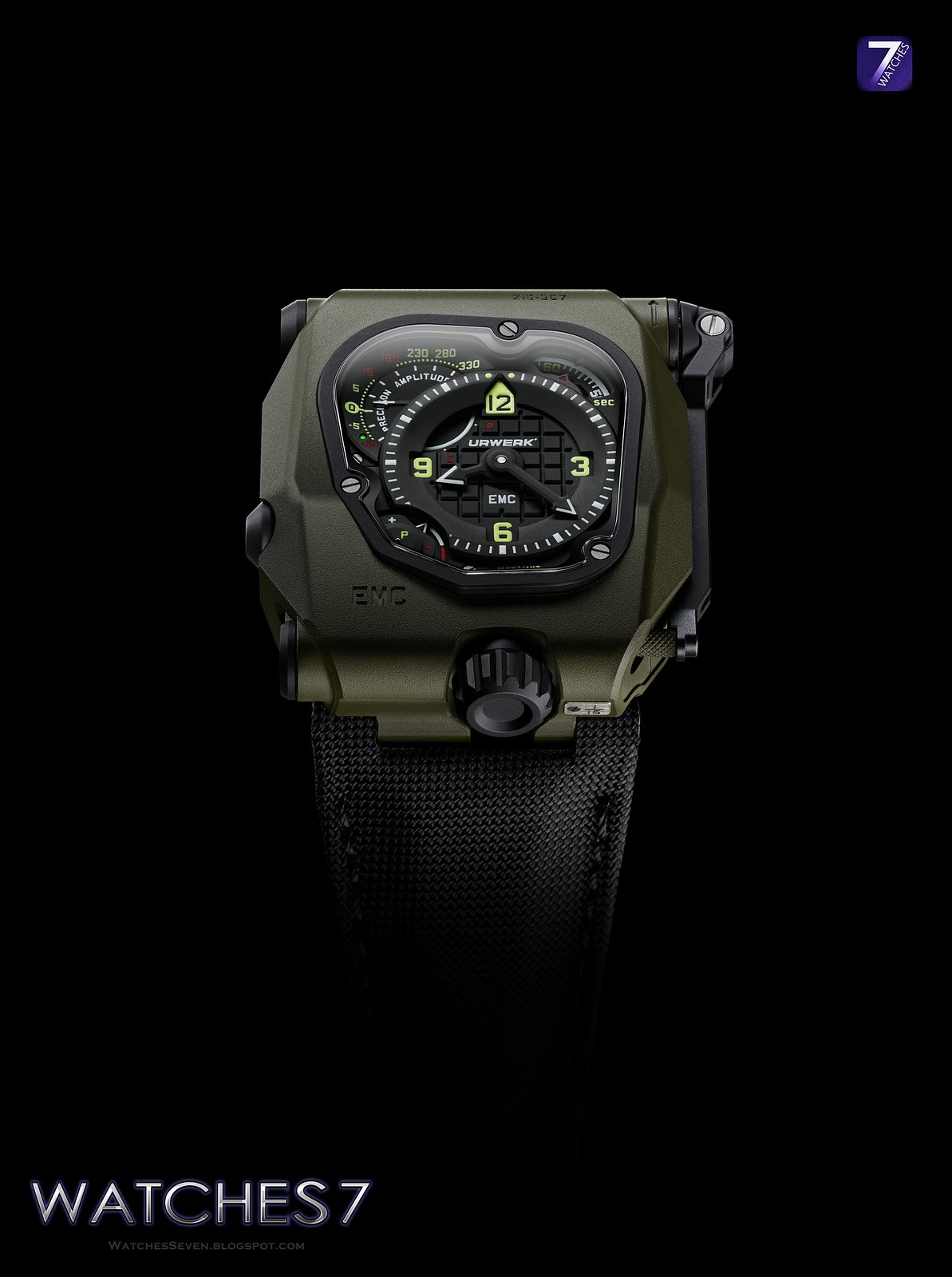
No comments:
Post a Comment